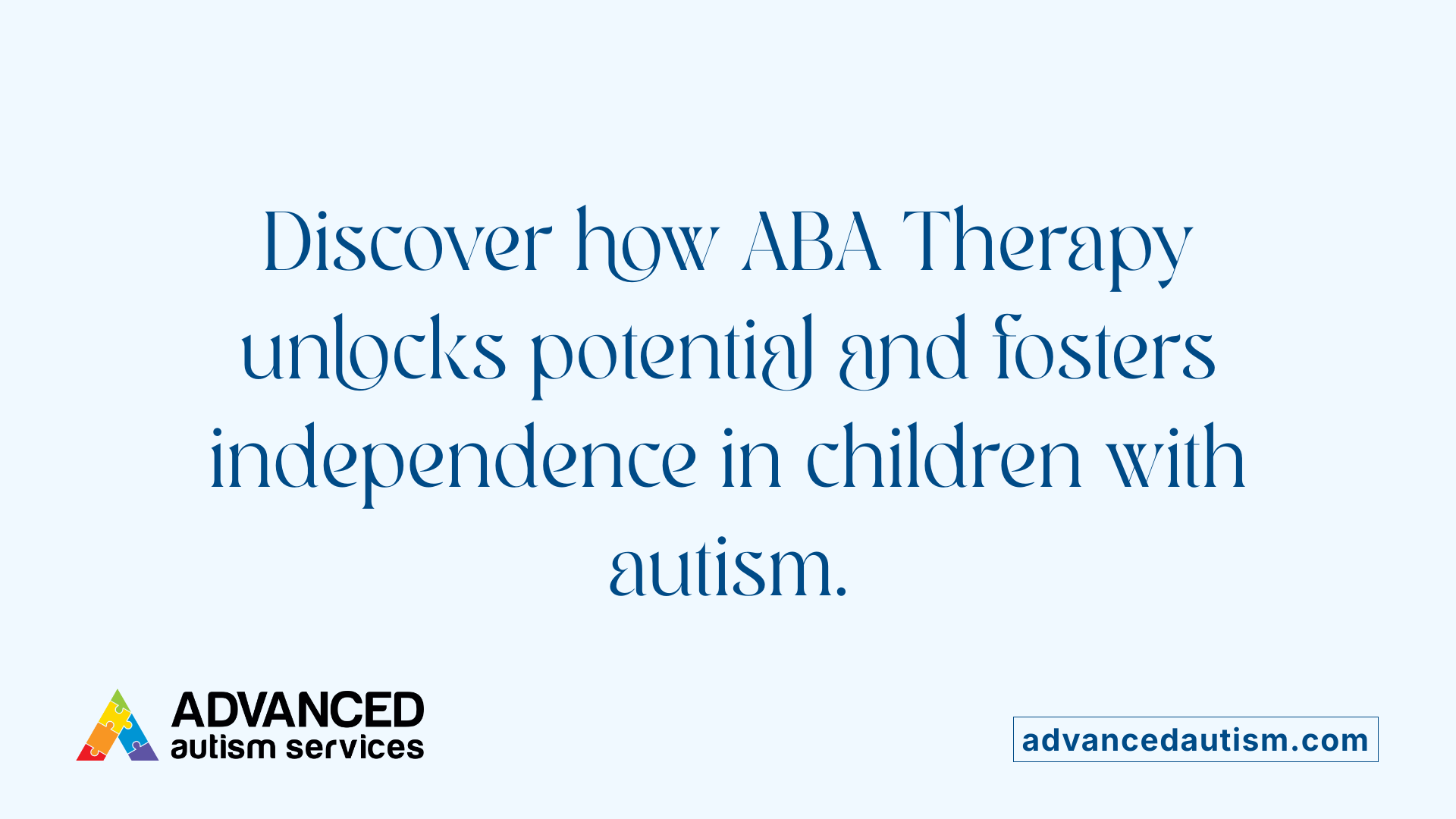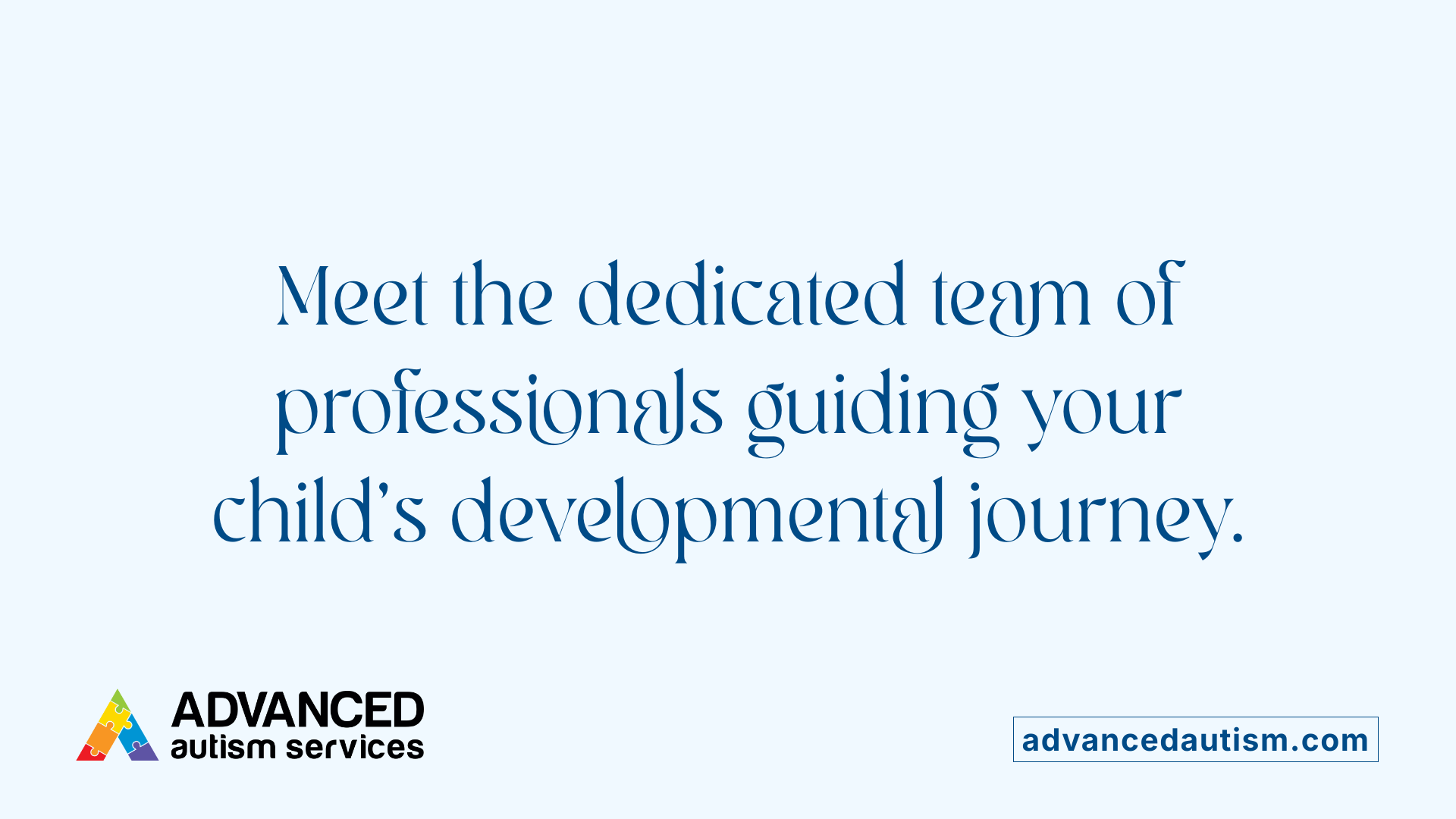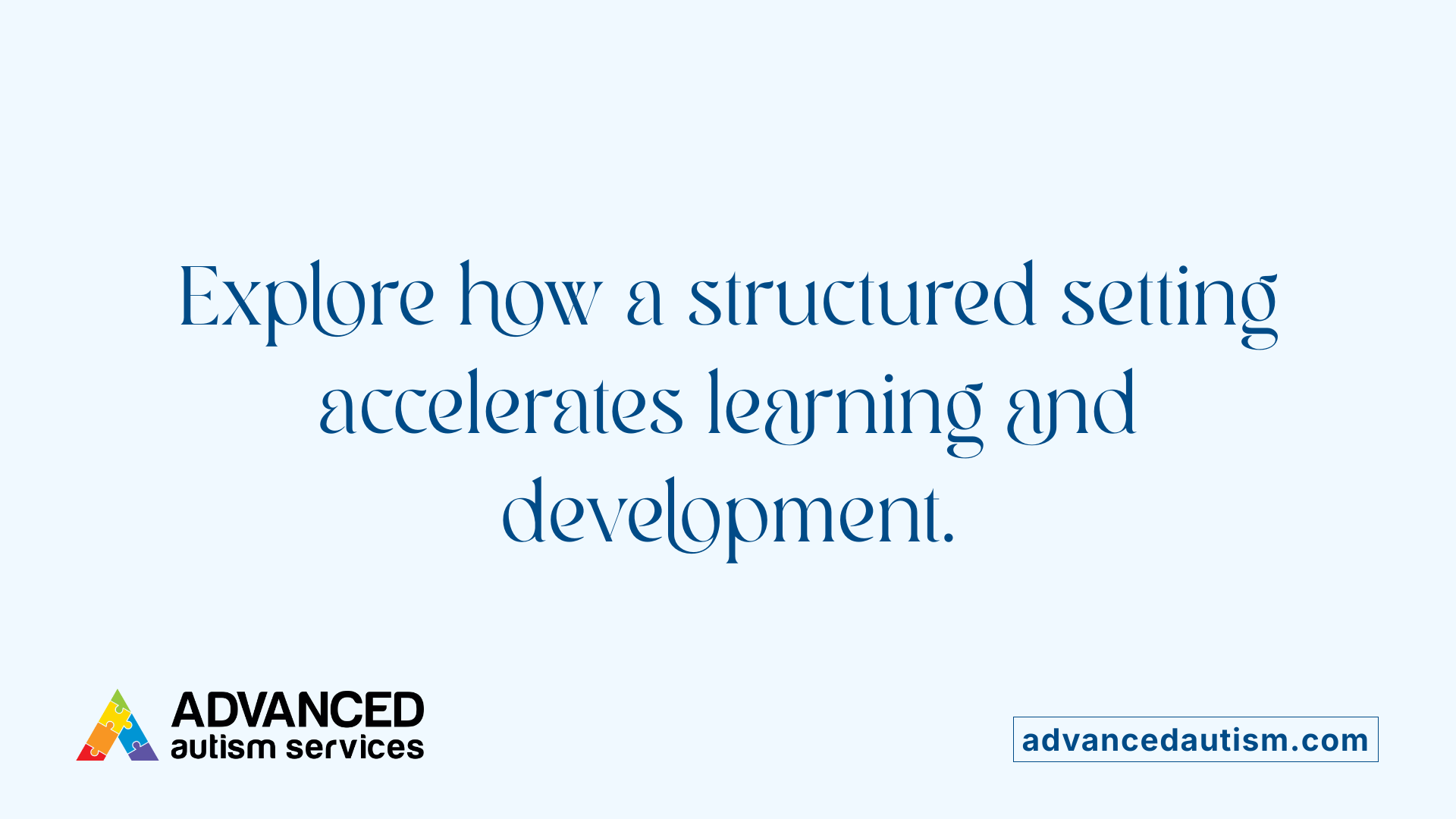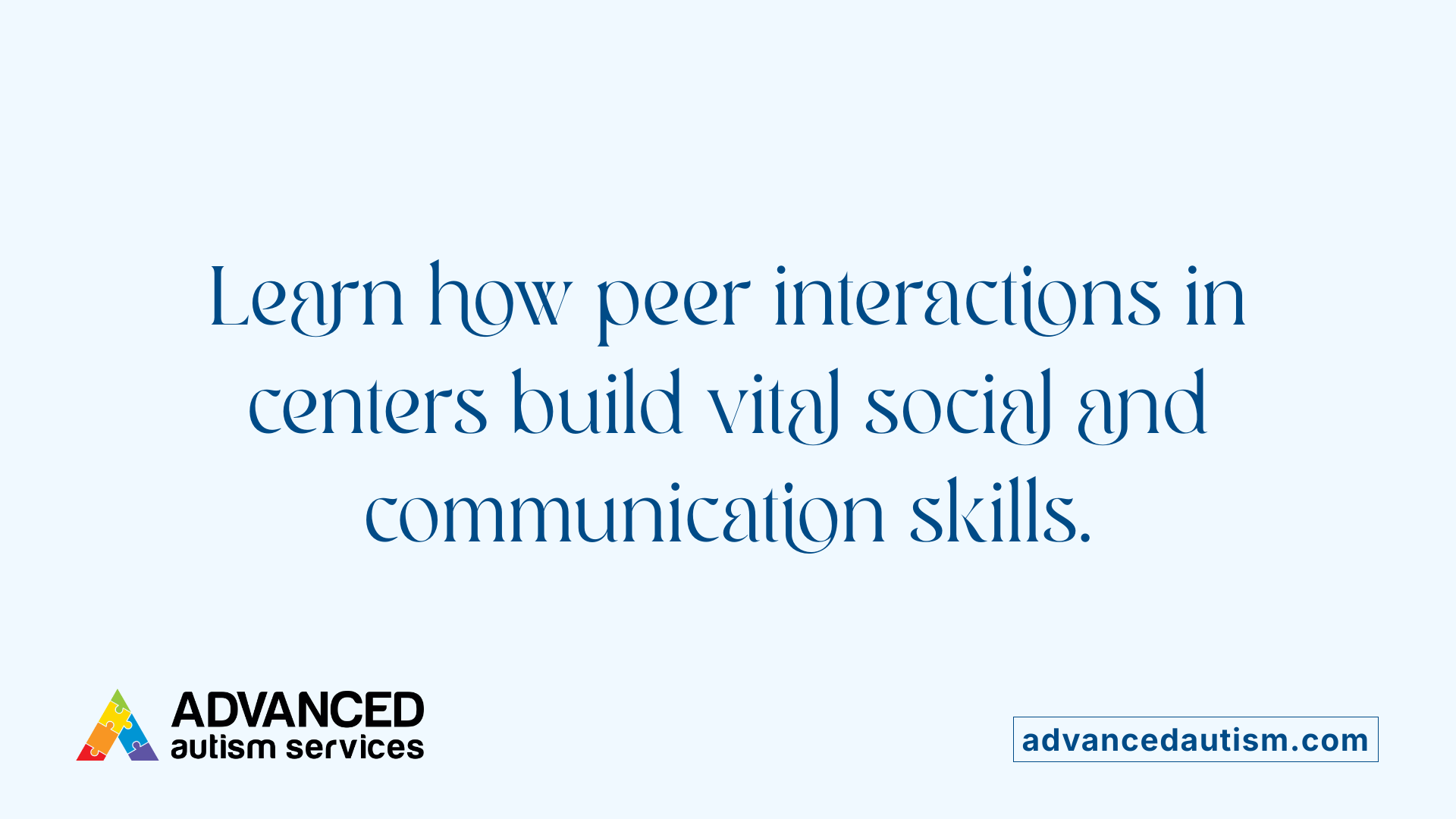Understanding the Value of Structured Learning Environments in Autism Therapy
Applied Behavior Analysis (ABA) therapy is a cornerstone intervention for children with Autism Spectrum Disorder (ASD). When delivered in center-based programs, ABA therapy provides a uniquely structured environment that supports significant developmental progress. This narrative explores why center-based ABA therapy programs are ideal settings for structured learning and how they maximize the benefits of ABA through specialized resources, professional expertise, and carefully crafted routines.
What is Applied Behavior Analysis (ABA) Therapy and How Does it Help Individuals with Autism?

Definition of ABA therapy
Applied Behavior Analysis (ABA) therapy is a research-based intervention designed to help individuals with Autism Spectrum Disorder (ASD) by teaching essential skills and reducing unwanted behaviors. It relies on the principles of learning and behavior modification, using positive reinforcement to encourage desired actions and diminish problematic ones.
Goals and outcomes of ABA
The main goals of ABA therapy are to improve communication, social interaction, daily living skills, and independence. Children receiving ABA therapy often see gains in language use, social skills, school readiness, and behavior management. Tailored treatment plans allow therapists to address challenging behaviors while promoting meaningful developmental progress.
Importance of early and intensive intervention
Early initiation of ABA therapy has been shown to significantly enhance a child's communication and social competencies. Intensive, consistent therapy schedules, particularly in structured environments, lead to better focus and routine development, resulting in significant improvements.
Key techniques used in ABA therapy
ABA uses various evidence-based methods, including Discrete Trial Training (DTT), Pivotal Response Training (PRT), and Natural Environment Training (NET). These techniques break down complex skills into manageable steps and teach them through repetition, reinforcement, and practice in natural settings.
Settings where ABA is delivered
ABA therapy can be provided in multiple settings such as home-based programs, schools, and center-based environments. Center-based ABA therapy offers a highly structured clinical setting with specialized resources, dedicated therapy rooms, and opportunities for social interaction with peers and professionals like Registered Behavior Technicians (RBTs) and Board Certified Behavior Analysts (BCBAs). This setting often facilitates better classroom readiness and social development compared to other environments.
Overall, ABA therapy is a flexible, individualized approach that supports children with autism in acquiring the skills needed for enhanced independence and quality of life.
Who Provides ABA Therapy in Center-Based Programs?

Who Typically Provides Applied Behavior Analysis Therapy?
Applied Behavior Analysis (ABA) therapy in center-based programs is delivered by a team of trained and certified professionals. Key providers include Board Certified Behavior Analysts (BCBAs) who develop and oversee personalized treatment plans. They ensure that the therapy aligns with evidence-based practices and adjusts strategies based on ongoing data collection and assessments.
What Roles Do BCBAs and Registered Behavior Technicians (RBTs) Play?
BCBAs function as clinical supervisors responsible for designing interventions and guiding the therapy process. Registered Behavior Technicians (RBTs), under the supervision of BCBAs, implement daily therapy sessions. RBTs work directly with children, applying techniques such as Discrete Trial Training (DTT) and Natural Environment Training (NET) to teach new skills and manage behaviors.
How Does Multidisciplinary Collaboration Support Therapy?
Center-based ABA therapy often involves collaboration among a multidisciplinary team that may include clinical directors, speech therapists, occupational therapists, and educators. This collaborative approach ensures comprehensive care that addresses multiple aspects of a child's development, including communication, social interaction, and daily living skills.
What Are the Training and Certification Requirements?
Professionals providing ABA therapy must have relevant certifications and training. BCBAs hold graduate-level certification involving coursework, supervised fieldwork, and a competency exam. RBTs complete specialized training supervised by BCBAs and must pass a certification exam. This ensures the delivery of high-quality, evidence-based therapy.
Why Is Professional Supervision Important?
The structured supervision by BCBAs ensures interventions are implemented correctly and safely. It allows for frequent progress monitoring, adjustment of treatment plans, and ensures fidelity to ABA methodologies. Professional supervision is crucial for achieving meaningful developmental progress in children receiving center-based ABA therapy.
Core Principles of ABA Therapy Driving Structured Learning

What are the core principles behind Applied Behavior Analysis therapy?
Applied Behavior Analysis (ABA) therapy is grounded in the understanding that behavior is heavily influenced by the environment. Children’s actions serve functions such as seeking attention, escaping uncomfortable situations, obtaining tangible rewards, or fulfilling sensory needs. Recognizing these functions allows therapists to design effective interventions.
Behavior as a function of environment
ABA therapy closely examines the relationship between the environment and behavior. Therapists assess the Antecedent (what happens before a behavior), the Behavior itself, and the Consequence (what follows) to determine triggers and reinforcements. This ABC model guides tailored treatment plans that modify or build behaviors thoughtfully.
Use of positive reinforcement
Positive reinforcement is a central principle in ABA. Desired behaviors are encouraged by providing rewards that motivate the child, such as praise, preferred toys, or specific tokens. This increases the likelihood that those behaviors will reoccur, helping children acquire new skills and minimize unwanted actions.
Techniques such as prompting, modeling, chaining, and extinction
ABA employs several systematic teaching methods:
- Prompting: Providing cues or assistance to help a child perform a skill.
- Modeling: Demonstrating the desired behavior for the child to imitate.
- Chaining: Breaking complex tasks into smaller steps and teaching each sequentially.
- Extinction: Reducing unwanted behaviors by withholding reinforcement.
These techniques are applied consistently to ensure the child masters skills effectively.
Data-driven individualized interventions
ABA therapy emphasizes meticulous data collection and analysis. Progress is regularly monitored through assessments and recorded observations. This data informs ongoing adjustments to the therapy plan, making it highly individualized and responsive to each child’s unique needs.
Consistent application of behavioral principles
Consistency is vital in ABA. Therapists, such as Registered Behavior Technicians (RBTs) under Board Certified Behavior Analysts (BCBAs), apply behavioral principles with precision across sessions and settings. This establishes strong routines and reliable learning environments that accelerate developmental gains.
Through these core principles—behavior shaped by environment, positive reinforcement strategies, systematic teaching techniques, detailed data collection, and consistent application—ABA therapy creates a structured, effective path for children to develop communication, social, and daily living skills.
Advantages of a Structured Clinical Environment in Center-Based ABA

What Design and Features Define Clinical Settings for ABA Therapy?
Center-based ABA therapy takes place in a structured, clinical environment specifically tailored to support developmental growth. These centers feature dedicated therapy rooms furnished with age-appropriate materials, educational supplies, and toys that reinforce learning objectives. Specialized spaces are designed to encourage social interaction, communication, and independent skill development.
How Does the Center-Based Setting Minimize Distractions?
One significant advantage of the clinical setting is the intentional minimization of distractions. Unlike home environments, treatment rooms are free from distractions such as televisions and pets, which can interfere with focused learning. This increased focus enhances the child’s ability to engage with therapeutic tasks effectively.
What Role Do Specialized Therapy Rooms and Materials Play?
These therapy rooms are equipped to break down skills into manageable steps, facilitating learning tailored to the child’s pace. Specialized resources, including reinforcers and varied learning materials, allow therapists to implement evidence-based interventions such as Discrete Trial Training (DTT), Pivotal Response Training (PRT), and Natural Environment Training (NET).
How Do Routines and Predictable Schedules Benefit Children?
The structured environment supports routine establishment and predictable schedules, which have been shown to improve focus, behavior, and skill acquisition. Children develop stronger routines and gain confidence through consistent therapy sessions, enabling them to build on existing skills systematically.
In What Ways Does the Setting Support Communication and Social Interactions?
Center-based ABA therapy provides opportunities for social interaction not only with therapists but also with peers. Group activities, peer play, and social imitation exercises foster the development of essential communication skills such as greeting, sharing, and cooperation. This social environment mirrors real-life interactions and helps children generalize skills beyond the therapy setting.
Enhanced Social and Communication Skills Through Peer Interaction

Opportunities for social interaction
Center-based ABA therapy offers structured opportunities for children to engage socially, which is critical for developing effective communication and interpersonal skills. These opportunities arise both in therapy-designed activities and in peer interactions naturally facilitated by the clinical setting.
Small group and peer activities
Children often participate in small groups where therapists encourage joint play, sharing, turn-taking, and cooperative tasks. Such interactions are purposefully designed to build foundational social behaviors and mimic real-world dynamics.
Examples of social communication skills taught
Therapists focus on teaching essential social communication skills including greeting others, initiating conversations, responding to questions, sharing, and cooperating with peers. These skills support children in better navigating social environments both within and beyond therapy sessions.
Role of multidisciplinary teams in fostering social development
A multidisciplinary team comprising Board Certified Behavior Analysts (BCBAs), Registered Behavior Technicians (RBTs), and clinical directors collaboratively design and monitor individualized therapy plans. This team approach ensures social skill goals are integrated across all therapeutic interventions and adapted based on ongoing progress assessments.
Benefits over home-based therapy in social contexts
Compared to home-based ABA therapy, center-based programs provide a unique environment that promotes interaction with multiple peers and professional staff, enhancing the practice and generalization of social skills. Access to varied social scenarios and peer models in centers helps children improve social communication more effectively than in isolated home settings.
Resource Access and Therapeutic Tools Unique to Center-Based Settings
Availability of Specialized Learning Materials and Reinforcers
Center-based ABA therapy centers are equipped with a wide array of specialized educational supplies, toys, and reinforcers designed specifically to enhance learning and engagement for children with autism spectrum disorder (ASD). These resources are carefully selected to be age-appropriate and to support developmental goals such as communication, social interaction, and independence.
Use of Diverse Activity Setups
The dedicated therapy rooms and specialized spaces within these centers enable therapists to implement a variety of distinct activity setups. These setups often include structured environments for discrete skill training, as well as more flexible group activities that encourage social interaction and functional communication. Such diversity allows for both individualized and small group therapy plans tailored to each child's needs.
Access to Expert Therapists and Clinical Directors
A significant advantage of center-based ABA therapy lies in its access to experienced professionals, including Registered Behavior Technicians (RBTs), Board Certified Behavior Analysts (BCBAs), and clinical directors. This multidisciplinary team collaborates closely to develop, monitor, and adapt personalized treatment plans, ensuring that evidence-based interventions meet the evolving goals of each child.
Integration of Multiple ABA Techniques Like DTT and NET
Centers employ a comprehensive approach by integrating various ABA methods such as Discrete Trial Training (DTT), Natural Environment Training (NET), and Pivotal Response Training (PRT). This integration allows therapists to break down complex skills into manageable steps, provide instruction in both controlled and natural settings, and reinforce learning through diverse, motivating activities.
Benefits of Simulated Real-Life Situations
Structured environments in therapy centers offer unique opportunities to simulate real-life scenarios that help children practice and generalize skills. For example, learning routines similar to classroom settings, engaging in peer play, or practicing social greetings within the center prepare children for similar interactions outside the therapy environment. These simulated situations enhance skill retention and readiness for daily living and school activities.
Measuring and Maximizing Therapy Effectiveness in Center-Based Programs
How is the effectiveness of ABA therapy measured?
The effectiveness of ABA therapy is gauged through systematic data collection and detailed behavior tracking. Therapists in center-based programs carefully record information such as the frequency, duration, and intensity of targeted behaviors and skill acquisition. These continuous data points are essential for analyzing progress over time.
To better quantify developmental gains, standardized assessment tools like the Verbal Behavior Milestones Assessment and Placement Program (VB-MAPP) and the Assessment of Basic Language and Learning Skills (ABLLS-R) are employed. These tools help create clear benchmarks across domains such as communication, social interaction, and daily living skills.
What methods support regular assessment and progress monitoring?
Progress monitoring in center-based ABA therapy involves regular collection and review of data through observations and scoring systems. Visual aids such as graphs and charts display trends in skill improvements, enabling therapists and multidisciplinary teams—including Board Certified Behavior Analysts (BCBAs)—to make informed decisions.
Family input, alongside feedback from Registered Behavior Technicians (RBTs) and clinical directors, further enriches the understanding of the child's developmental trajectory. These evaluations are often scheduled on a weekly or monthly basis to maintain timely adjustments.
How are treatment plans adjusted based on outcomes?
Treatment plans in center-based ABA are dynamic and personalized. As data reveals progress or challenges, plans are revised to better suit the child's evolving needs. A decrease in targeted problem behaviors, or a plateau in skill acquisition, signals a need to shift strategies or increase intervention intensity.
By focusing on individual goals and behaviors, the multidisciplinary team tailors interventions such as Discrete Trial Training (DTT) or Natural Environment Training (NET), optimizing outcomes. This responsiveness ensures therapy remains effective and aligned with developmental objectives.
Why is consistent professional oversight important?
Consistent supervision by qualified professionals—such as BCBAs—is critical for maintaining the rigor and efficacy of ABA therapy. Through ongoing oversight, data collection methods remain standardized and interventions are applied correctly.
This professional guidance supports fidelity to evidence-based practices, helping to maximize treatment benefits. It also fosters collaboration among therapists, ensuring cohesive, client-centered care that adapts as the child grows.
Effectiveness in center-based ABA programs is thus a comprehensive, data-driven process involving standardized assessments, continuous monitoring, adaptive treatment planning, and expert oversight to support meaningful developmental progress in children with autism and related challenges.
The Role of Family Involvement and Individualized Care in Center-Based ABA
How Is Family Included in the Therapy Process?
Family involvement is a vital component of center-based ABA therapy. Therapy centers encourage family members to participate by observing sessions and contributing to goal setting. This collaboration helps families understand therapy techniques and supports consistent implementation of strategies at home.
What Home Practice and Carryover Strategies Are Encouraged?
Families are guided to practice skills learned during therapy at home, reinforcing development and promoting generalization. Therapists provide specific carryover strategies, making sure learned behaviors apply across environments, which maximizes therapy effectiveness.
How Are Intervention Plans Tailored to Each Child?
Each child receives an individualized treatment plan designed by a multidisciplinary team that includes Board Certified Behavior Analysts (BCBAs) and clinical directors. These plans are tailored based on in-depth behavior analysis, focusing on the child's unique needs, strengths, and challenges.
What Comprehensive Care Do Multidisciplinary Teams Provide?
Multidisciplinary teams offer comprehensive care by integrating expertise from various professionals. This collaboration ensures that interventions address multiple developmental domains such as communication, social skills, academic readiness, and daily living. Regular data collection and progress assessments refine the therapy process.
How Is Generalization Supported Beyond the Therapy Center?
Center-based ABA therapy supports generalization by involving families in active participation and home practice. The structured clinical environment, paired with family collaboration, helps children apply learned skills in everyday settings—bridging therapy and real-life situations for meaningful developmental gains.
Bridging Structure and Success in ABA Therapy Centers
Center-based ABA therapy programs create a powerful framework for structured learning through specialized environments, expert professionals, and tailored interventions. The clinical setting’s controlled and distraction-free atmosphere supports focused skill acquisition while fostering social engagement and independence. Ongoing data-driven assessments ensure that each child’s unique needs inform their therapy journey, while family collaboration enhances carryover and generalization of skills. Together, these elements make center-based ABA therapy an optimal choice for children with autism seeking meaningful developmental progress in communication, behavior, and daily living skills.
References
- Center-Based ABA Therapy for Autism Support
- Exploring Center-Based ABA Therapy's Benefits
- Benefits of Center-Based ABA Therapy
- Benefits of Center-Based Therapy for Autistic Children
- Center-Based ABA Therapy
- A Guide to ABA Therapy Data Interpretation
- Tracking Progress: How To Measure ABA Therapy Success
- How ABA Therapy Works: Breaking Down the Process
- ABA Therapy & Autism Treatment Results
- The 7 Dimensions & Core Principles of ABA



